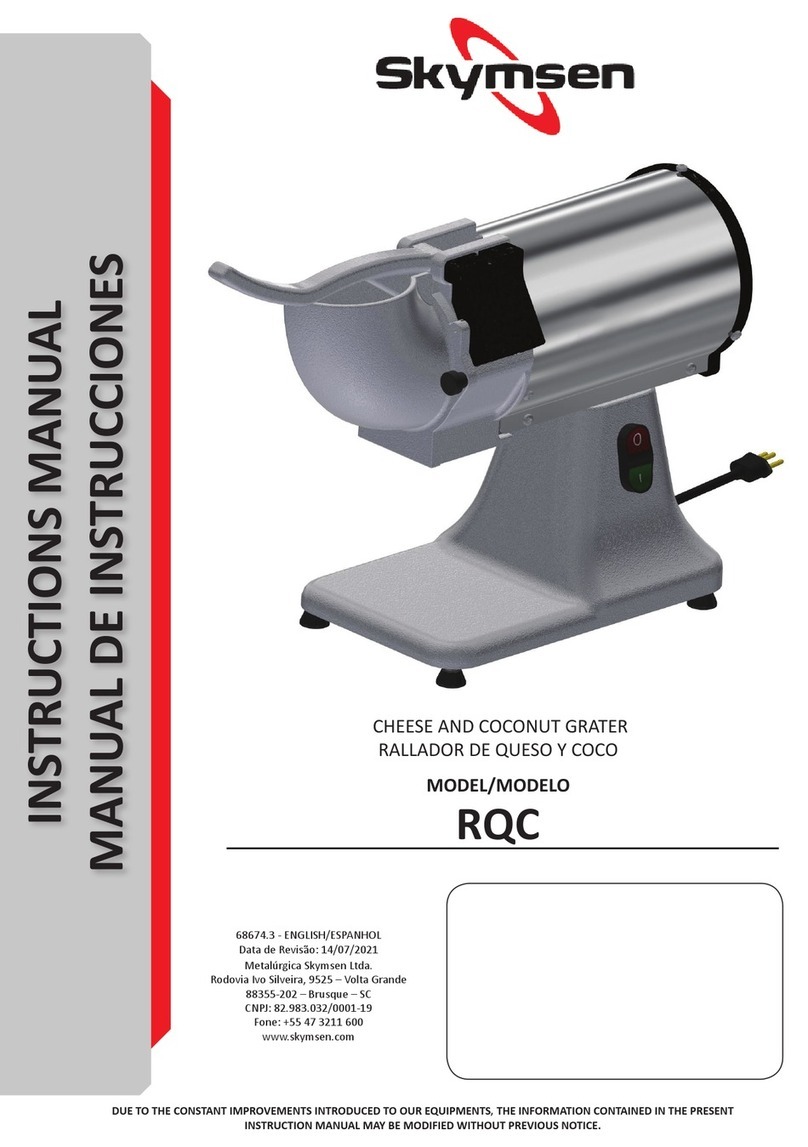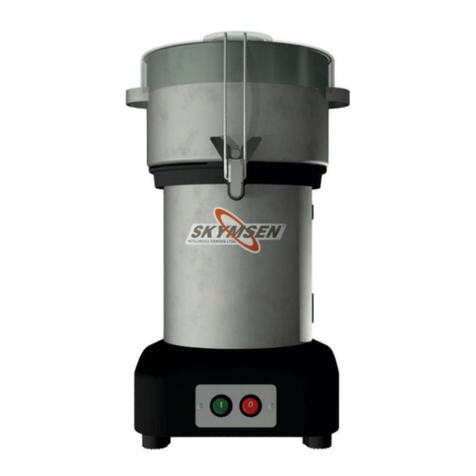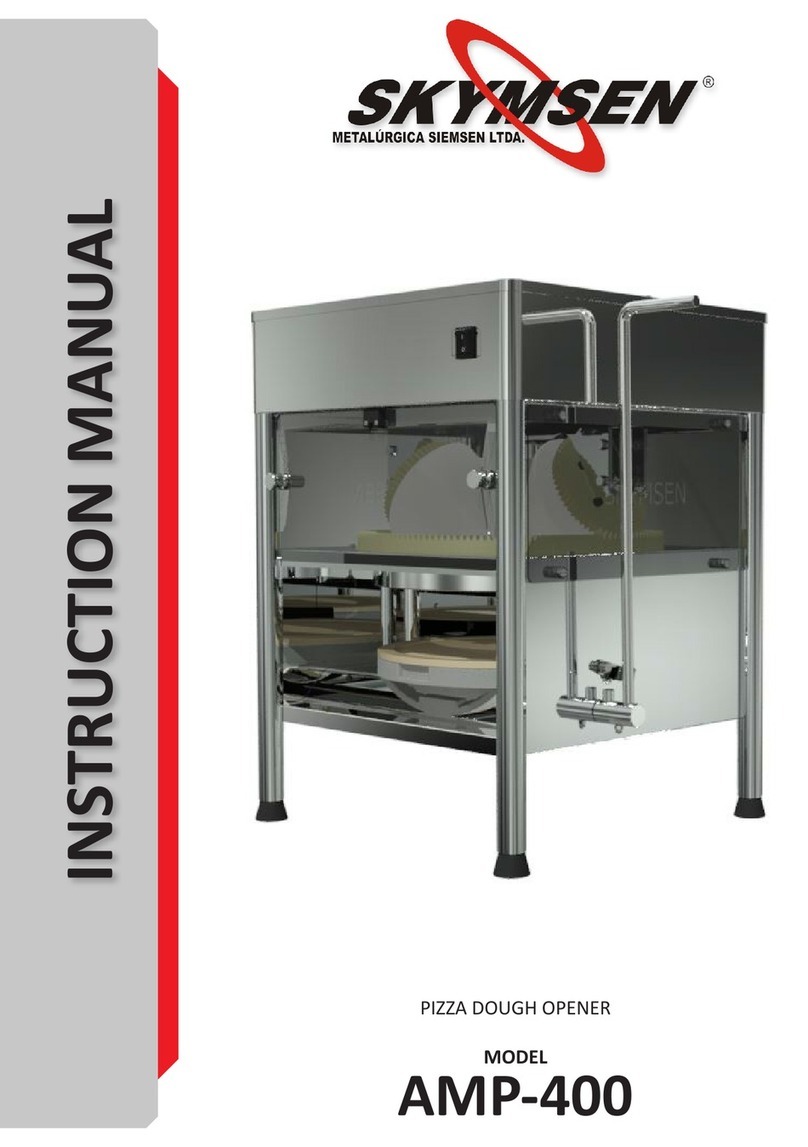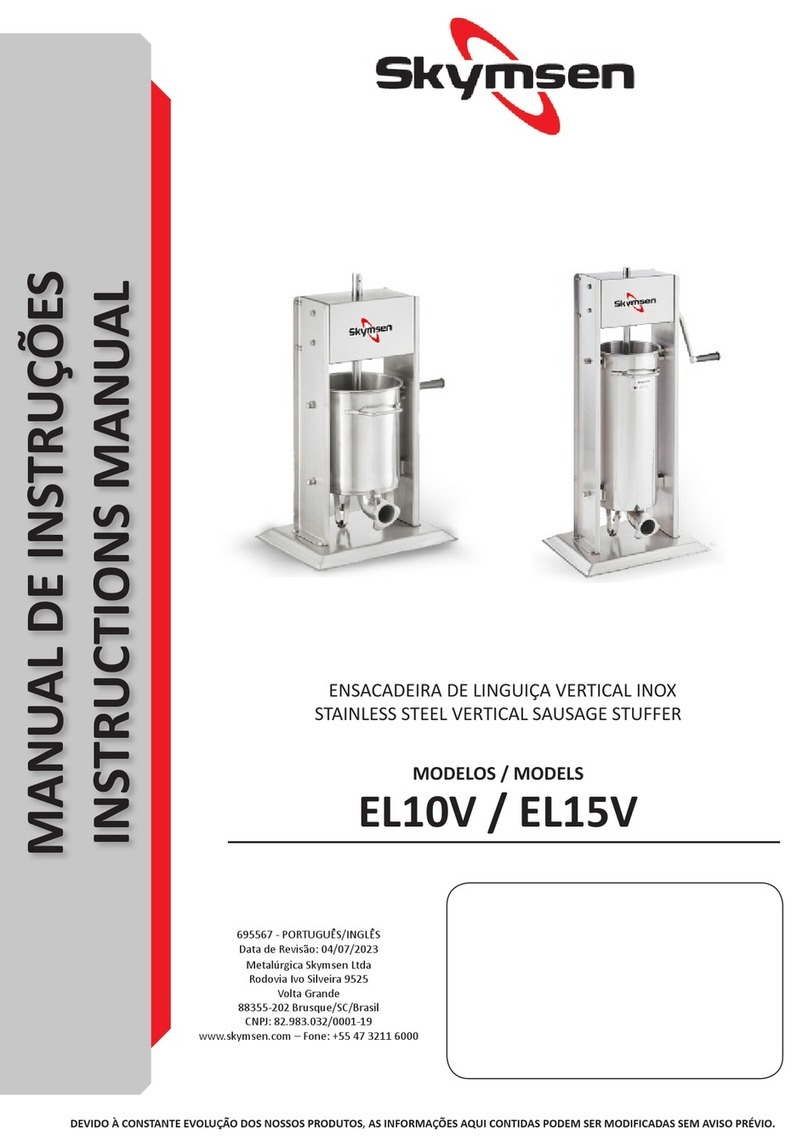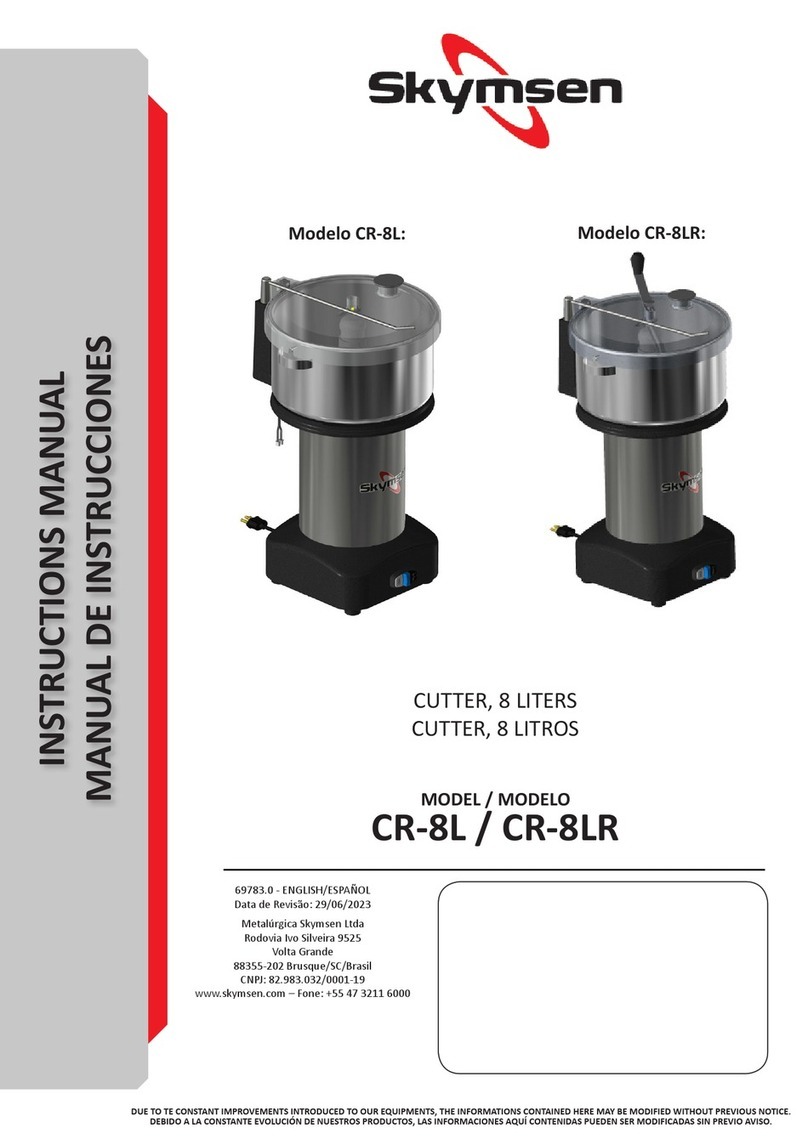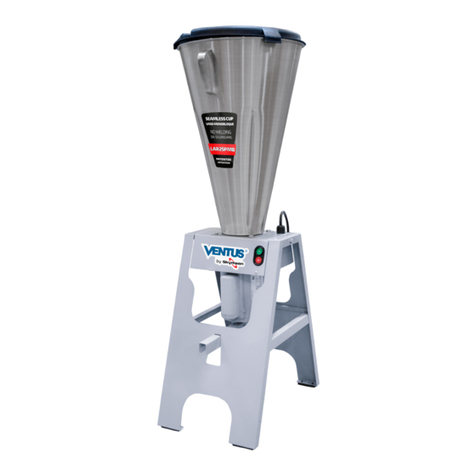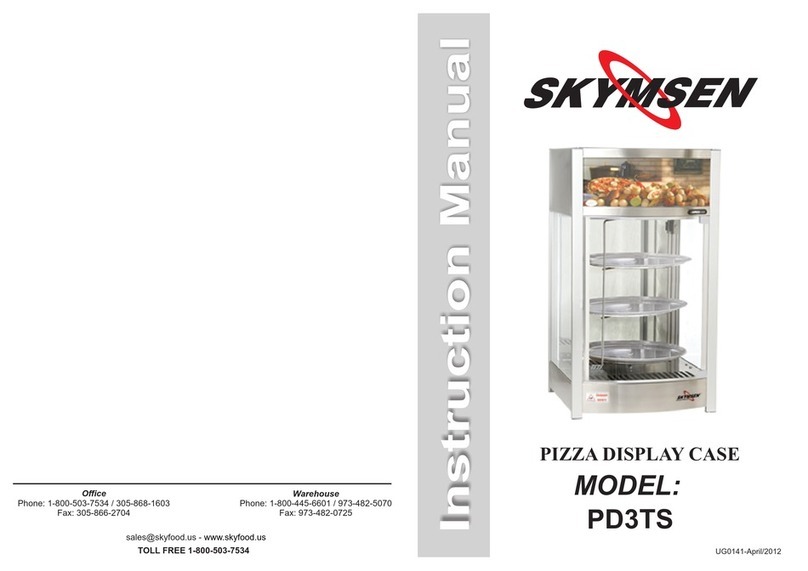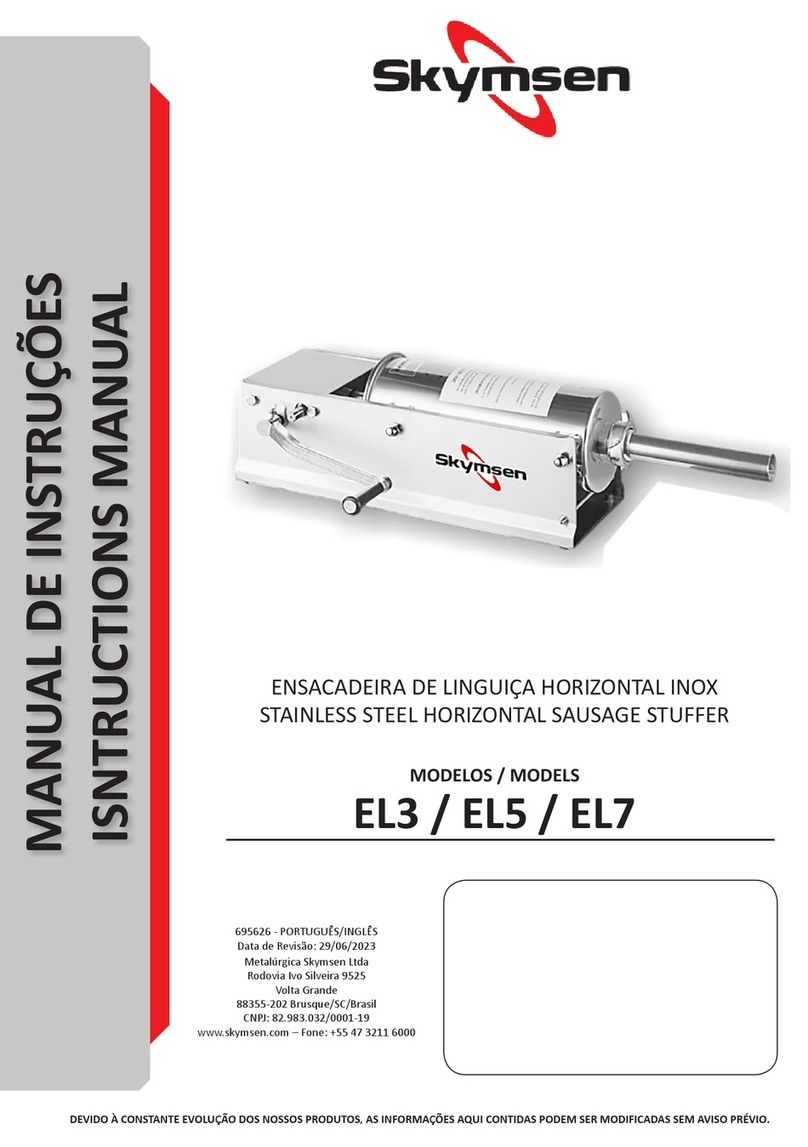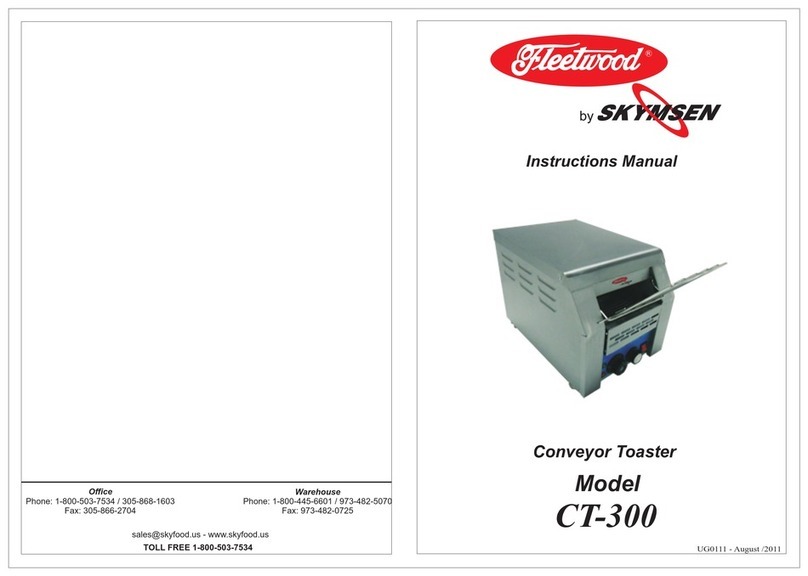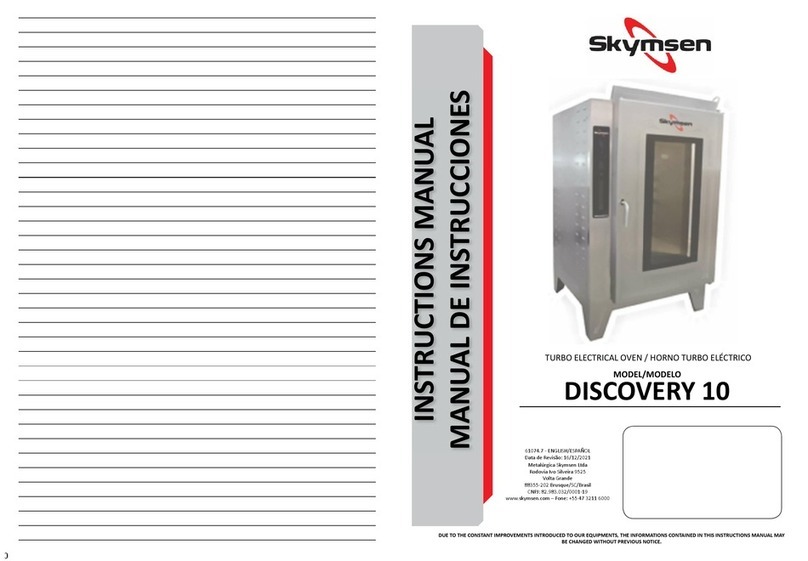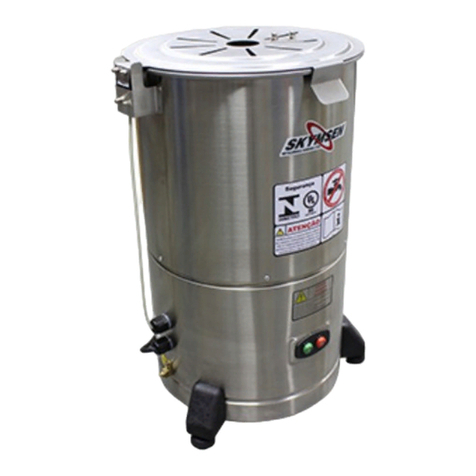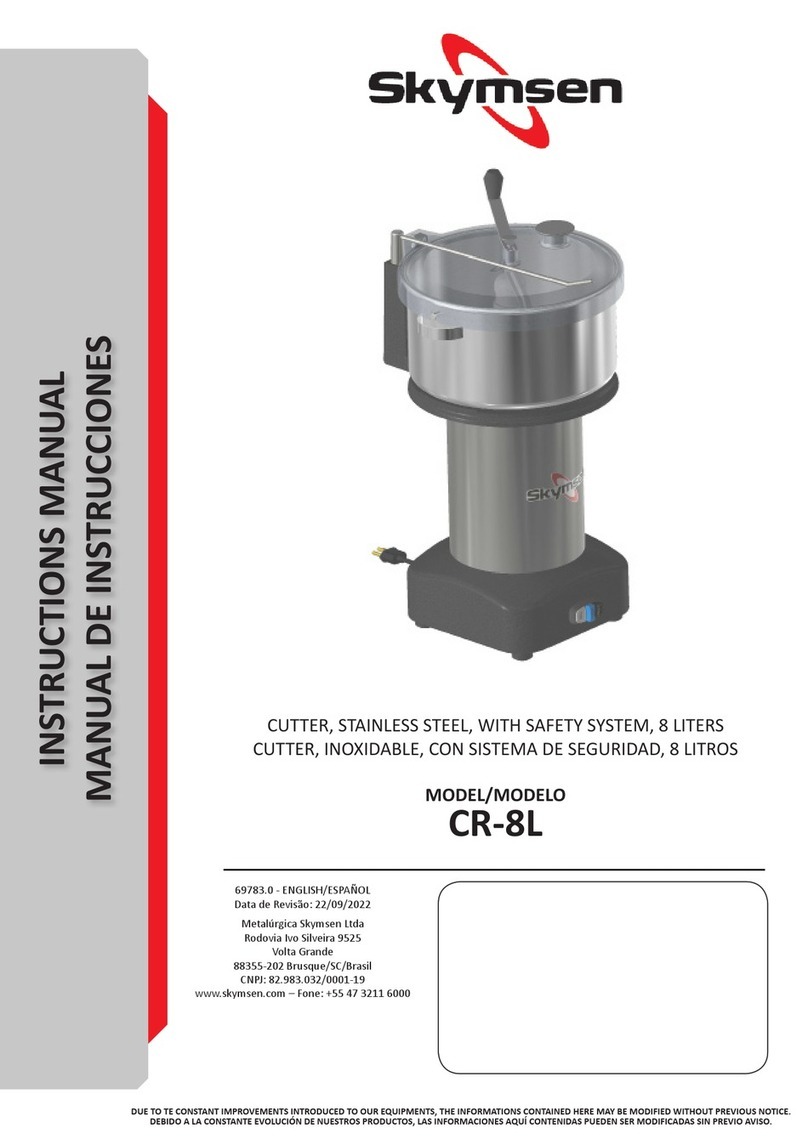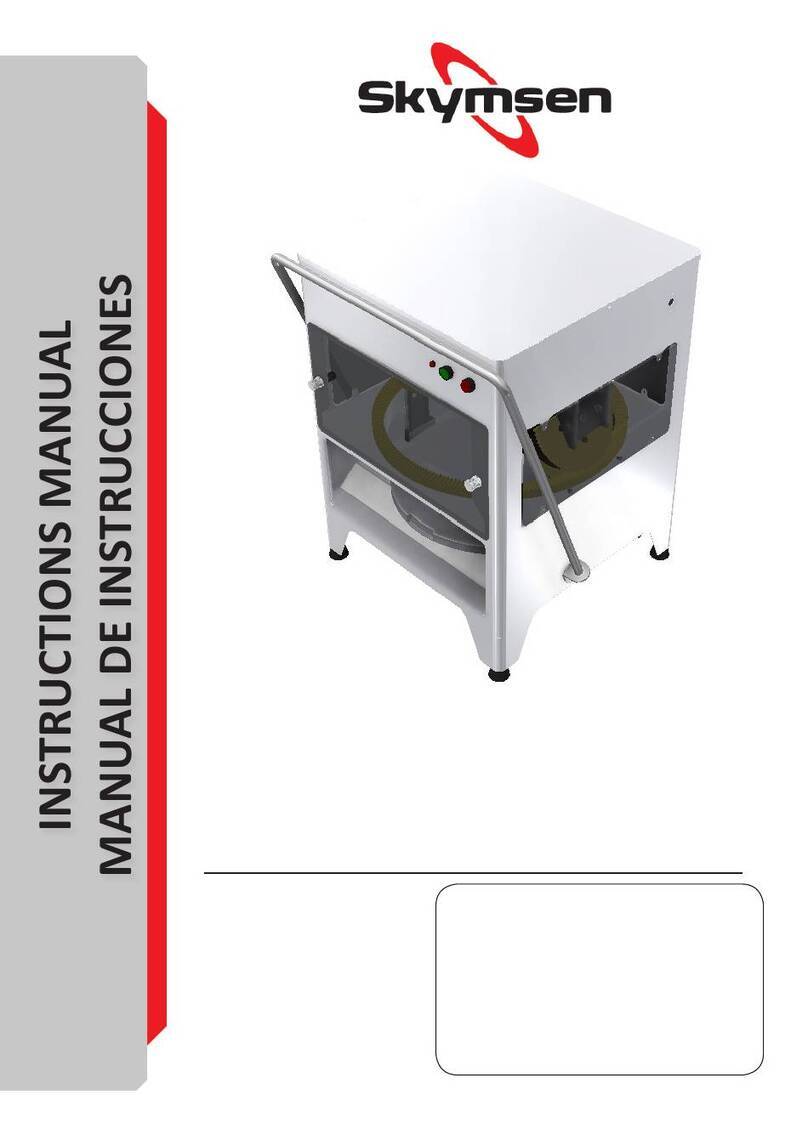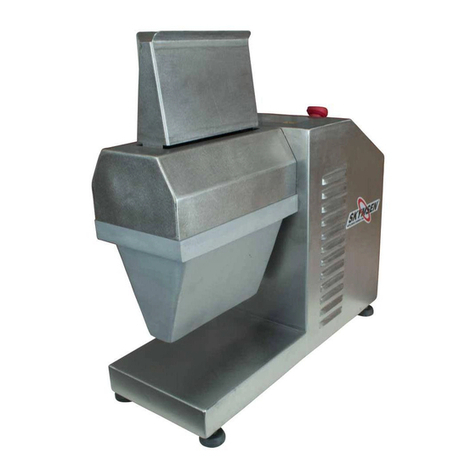
IMPORTANT
Never spray water directly to the equipment.
3.4 Cauons with stainless steel
The Stainless Steel may present rust signs, which are ALWAYS CAUSED BY EXTERNAL
AGENTS, especially when the cleaning or sanizaon is not constant and appropriate.
IMPORTANT
Unplug the machine from socket before start cleaning.
Equipment must be totally cleaned:
-Before using it for the first me;
-Aer daily operaon;
-When it will not be used for long periods of me;
To clean the Equipment follow the instrucons bellow:
-Unplug the machine from socket.
-Remove the Disc #6 (Pic. 01).
Normally the place with more concentraon of residues is the Disc and the Disc Base.
The Disc can be removed and washed individually, using a cloth or sponge with a lile of
water and neutral soap.
It is not possible to remove the Disc Base for cleaning. Clean the top of the Disc Base with
a wet cloth and lile neutral detergent and wipe it dry. To facilitate access under the Disc
Base for cleaning, pull the Handle down to li it up and use the Handle Lock #3 (Pic. 01) to
lock it in place and clean underneath it the same way as described above.
To access the Cones, leave the Disc Base completely down to have free access to both
Cones.
In case the Cones or any other parts are covered with dry dough or flour, proceed as per
below instrucons:
-Get a wet so cloth or sponge with lile neutral detergent and pass over the area covered
with dry dough or flour.
-Wait for a few seconds and right aer this, use a plasc scraper to remove the dough or
flour from the parts.
-Repeat these cleaning instrucons with a wet cloth or sponge and neutral detergent if
necessary.
-Finalize the cleaning with a so dry cloth to wipe dry the enre unit.
3.3 Cleaning and Sanizing 4.2.3 Cuidados
El cable de alimentación de energía eléctrica de la maquina, debe tener una sección
suficiente para soportar la potencia eléctrica consumida.
Cables eléctricos que estuvieran en el suelo cerca de la maquina, deben ser protegidos
para evitar corto circuitos.
Los tanques de aceite deben estar siempre llenos. Reponga aceite cuando necesario.
4.3 Inspección de Runa
4.3.1 Aviso
Al averiguar la tensión de las correas o de las cadenas, NO coloque los dedos entre las
correas y las poleas, ni entre las cadenas y sus engranajes.
4.3.2 Cuidados
Verifique los motores, correas, cadenas o engranajes y las partes deslizantes o girantes de
la maquina, con relación a ruidos anormales.
Al verificar la tensión de las correas o de las cadenas, sustuya el conjunto, caso alguna
correa, cadena o engranaje, tenga desgaste.
Verifique las protecciones y los disposivos de seguridad para que siempre funcionen
adecuadamente.
4.4 Operación
4.4.1 Avisos
No trabaje con pelo largo, que pueda tocar cualquier parte de la maquina, pues el mismo
podría causar serios accidentes. Manténgalo recogido, ó cúbralo con una gorra o pañuelo.
- Solamente operadores entrenados y calificados pueden operar la maquina.
- Nunca toque con las manos o de cualquier otra manera, partes girantes de la maquina.
- JAMÁS opere la maquina, sin algún de sus accesorios de seguridad.
4.5 Después de Terminar el Trabajo
4.5.1 Cuidados
Al terminar el día de trabajo proceda con la limpieza de la maquina. Para tanto, despréndala
sicamente de la toma.
